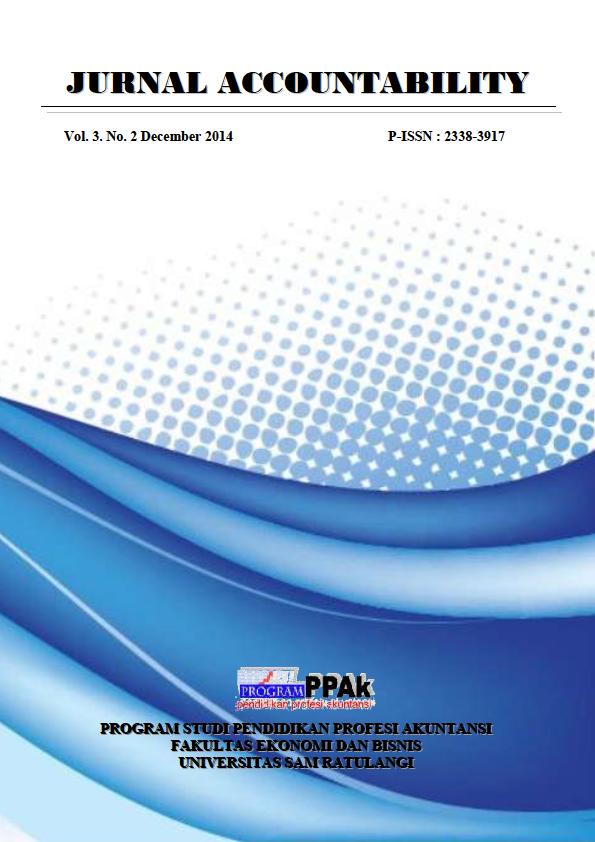PROSEDUR PENGHIMPUNAN DANA TABUNGAN SHAR-E DAN PENYAJIAN LAPORAN KEUANGAN PADA BANK MUAMALAT CABANG MANADO
Abstract
This study is a continuation of the study authors in 2008 that have not been issued with a variable and the same research object and aimed to evaluate the extent to which procedures Savings Fund Raising Shar-E run in the operational activities of savings products Shar-E so that later on when the financial statements of banks Muamalat published in accordance with the rules laid down in Requirements financial accounting standards (SFAS) No. 59 of accounting Islamic banking is executed.
The method used by the writer is descriptive research method with the primary data source (directly observed activities of employees of the accounting) and some secondary data (in the form of financial statements) whose purpose is to describe the state of the operational procedures of Muamalat bank branches serving customers Manado in savings products Shar -E and customer data entry system to the software to generate financial data in accordance with IAS 59, resulting in the presentation of the financial statements at the end of the closing presentation of the financial report that can be justified and the information presented is clear and fair information. While the techniques used were observation and interviews.
The research result shows that the system of Accounting at Bank Muamalat branch Manado related savings fund raising procedures Shar-E has followed the procedures established and consistently until now. This suggests that the Bank Muamalat Manado Branch has implemented rules contained in IAS (SFAS) No. 59 on Accounting for Islamic Banking theoretically.
Downloads
Published
Issue
Section
License
The articles published in Jurnal Accountability are licensed under Creative Commons Attribution-NonCommercial 4.0 International with authors as copyright holders.
Â

This work is licensed under a Creative Commons Attribution-NonCommercial 4.0 International License.
Â
- Share — copy and redistribute the material in any medium or format.
- Adapt — remix, transform, and build upon the material.
- The licensor cannot revoke these freedoms as long as you follow the license terms.
- Attribution — You must give appropriate credit, provide a link to the license, and indicate if changes were made. You may do so in any reasonable manner, but not in any way that suggests the licensor endorses you or your use.
- NonCommercial — You may not use the material for commercial purposes.
- No additional restrictions — You may not apply legal terms or technological measures that legally restrict others from doing anything the license permits.
- You do not have to comply with the license for elements of the material in the public domain or where your use is permitted by an applicable exception or limitation.
- No warranties are given. The license may not give you all of the permissions necessary for your intended use. For example, other rights such as publicity, privacy, or moral rights may limit how you use the material.


